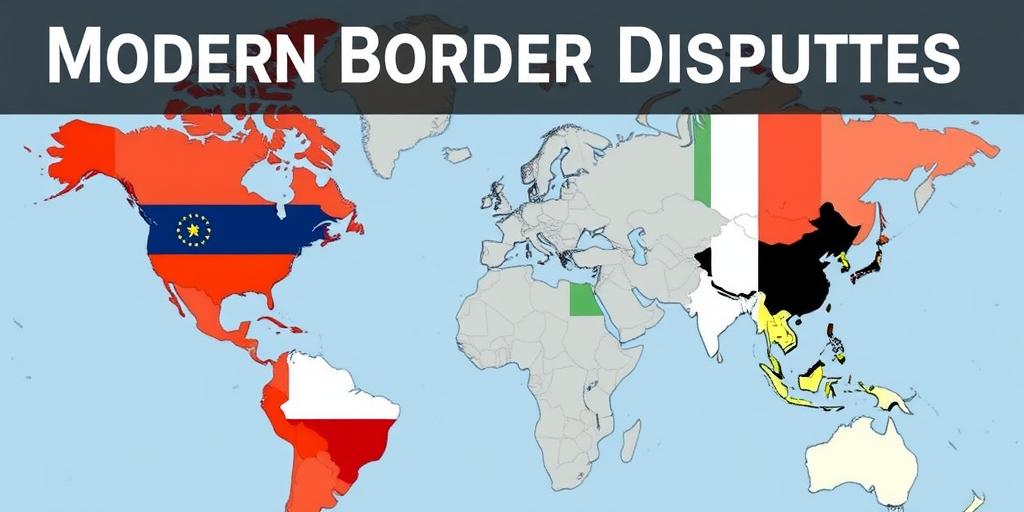Border disputes, a recurring theme throughout history, continue to shape the geopolitical landscape in the modern era. These conflicts, often rooted in historical claims, ethnic tensions, resource competition, or strategic considerations, can manifest in various forms, ranging from diplomatic disagreements to armed conflicts. This post will explore several contemporary case studies of border disputes, analyzing their origins, key players, and potential resolutions.
Case Study 1: The South China Sea Dispute
The South China Sea dispute involves overlapping territorial claims by several countries, including China, Vietnam, the Philippines, Malaysia, and Brunei. China's claim, based on its interpretation of historical records, encompasses a vast area within the "nine-dash line," which is contested by other claimant states. The dispute centers around the sovereignty of islands, reefs, and other maritime features, as well as the rights to exploit natural resources in the region. China's construction of artificial islands and its increasing military presence have heightened tensions, leading to diplomatic protests and legal challenges. The Permanent Court of Arbitration at The Hague ruled in 2016 that China's claims had no legal basis, but China has rejected the ruling.
Case Study 2: The Kashmir Conflict
The Kashmir conflict is a long-standing territorial dispute between India and Pakistan over the Kashmir region. The conflict dates back to the partition of India in 1947, when the princely state of Jammu and Kashmir acceded to India, a decision contested by Pakistan. The region is divided between India, Pakistan, and China, with each country administering different portions. The conflict has resulted in multiple wars and ongoing skirmishes between India and Pakistan, as well as a protracted insurgency within Indian-administered Kashmir. Despite numerous attempts at mediation, a lasting resolution remains elusive.
Case Study 3: The Russia-Ukraine Border Dispute
The Russia-Ukraine border dispute is centered around the Crimean Peninsula and parts of eastern Ukraine. In 2014, Russia annexed Crimea following a pro-Russian uprising and a disputed referendum. Ukraine and the international community condemned the annexation as illegal. Additionally, Russia has supported separatist movements in eastern Ukraine, leading to an ongoing conflict in the Donbas region. The conflict has resulted in thousands of casualties and a significant displacement of population. International efforts to mediate a peaceful resolution have yielded limited success.
Case Study 4: The Ethiopia-Eritrea Border Dispute
The Ethiopia-Eritrea border dispute stemmed from Eritrea's secession from Ethiopia in 1993. A border commission was established to demarcate the boundary, but disagreements over the town of Badme led to a bloody war between 1998 and 2000. The commission ruled in favor of Eritrea, but Ethiopia initially refused to accept the ruling. After years of stalemate, the two countries normalized relations in 2018, and Ethiopia accepted the border demarcation. However, challenges remain in fully implementing the agreement and addressing the lingering effects of the conflict.
Conclusion
These case studies illustrate the complexities and challenges associated with modern border disputes. The resolution of these conflicts requires a combination of diplomatic negotiation, legal frameworks, and a willingness to compromise. While some disputes have seen progress towards resolution, others remain intractable, posing a threat to regional and international stability. Understanding the underlying causes and dynamics of these disputes is crucial for fostering peaceful solutions and preventing future conflicts.









